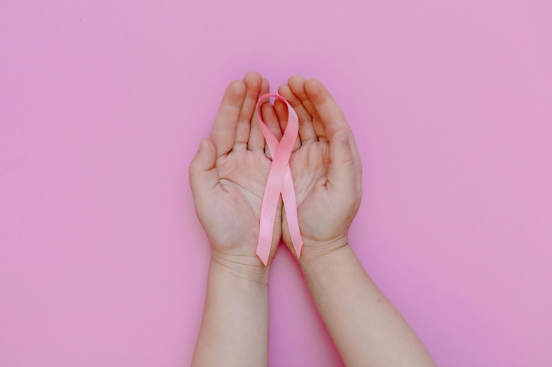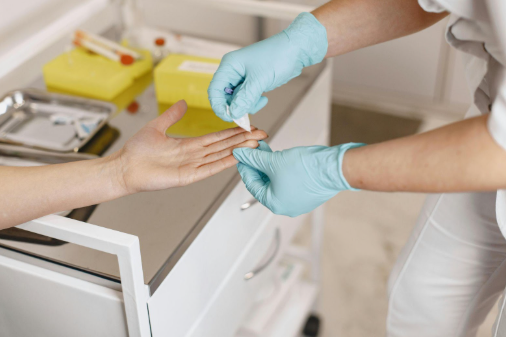May 1, 2025
How Do Your Genes Fit? Cracking the Code on Breast Cancer Risk
How Do Your Genes Fit? Cracking the Code on Breast Cancer Risk

Understanding the connection between genetics and breast cancer risk has become a vital part of modern medicine. Our genes play a significant role in determining our susceptibility to breast cancer, and by cracking the code of these genetic factors, we can better assess and manage our risk.
Read on as we explore how genetic factors contribute to breast cancer risk and provide steps you can take if you're concerned about your genetic predisposition.
The Basics of Genetics and Breast Cancer
Genes are the parts of DNA that carry instructions for making proteins. These proteins are necessary for the body’s functions, from cell growth to repair. DNA is organized into chromosomes, and we inherit these chromosomes from our parents. Each chromosome has thousands of genes, and their sequences can be altered in various ways. For example, a typo (refers to an error in the sequence of nucleotides) in the DNA sequence might not affect normal cell function, but a more significant change can lead to issues like cancer.
Breast cancer can occur when mutations or errors in specific genes lead to abnormal cell growth. These genetic changes can be inherited or acquired due to environmental factors. Understanding how these mutations fit into the broader picture of breast cancer risk can help in prevention and early detection.
Susceptibility Genes and Breast Cancer Risk
Some people are born with genetic mutations that increase their risk of developing breast cancer. These are known as susceptibility genes. Having a mutation in one of these genes does not guarantee that a person will develop cancer, but it does mean they have a higher risk compared to the general population.
For example, mutations in the BRCA1 and BRCA2 genes are well-known risk factors for breast cancer. These genes are responsible for repairing damaged DNA. When they are mutated, their ability to repair DNA is compromised, which increases the risk of developing cancer. Women with BRCA1 or BRCA2 mutations have a significantly higher risk of breast cancer compared to those without these mutations.
The Role of Chromosomes and Genes in Cancer Development
Human cells have 23 pairs of chromosomes for a total of 46 chromosomes. Each chromosome carries thousands of genes. Normally, each person has two copies of every gene, as they come from each parent. The other can often compensate if a gene is mutated in one copy. But if both copies are mutated or a key gene is missing, it can lead to cancer.
In the case of inherited breast cancer, a mutation in one gene copy is present in all cells from birth. This makes it easier for cancer to develop, as the second "normal" gene copy might be lost or mutated later in life. This genetic predisposition can lead to cancers occurring at a younger age and can also increase the likelihood of multiple cancers in an individual.
Identifying Genetic Risk Factors
Family history can provide important clues about genetic risk factors. If several family members across multiple generations have had breast cancer, particularly at a young age, it may indicate an inherited genetic mutation. For instance, a family with a history of breast cancer, ovarian cancer, or even rare cancers might warrant further genetic investigation. Identifying genetic risk factors early can help proactive measures be put in place.
Other signs of a potential genetic risk include:
- Multiple Cancers: Individuals who develop more than one cancer, such as breast and ovarian cancer, may have a hereditary risk.
- Early Onset: Breast cancer diagnosed at a young age is a key indicator of possible genetic involvement.
- Rare Cancer Types: The presence of rare cancers, like male breast cancer or pancreatic cancer, in the family could signal a genetic mutation.
Genetic Testing for Breast Cancer Risk
Genetic testing plays a big role in assessing breast cancer risk. This testing can identify whether someone has inherited a mutation in a gene associated with an increased risk of breast cancer. The primary goal of genetic testing is to determine if a person has an increased risk so that they can take preventive measures or undergo regular screenings.
Genetic testing is typically performed on blood samples, but saliva samples can also be used. Both methods provide valuable information, as DNA in saliva is just as informative as that in blood. Once the sample is collected, it is analyzed for mutations in known breast cancer susceptibility genes.
Understanding Genetic Test Results
When you receive genetic test results, they may indicate whether you have inherited a mutation associated with breast cancer. The three main types of results are as follows:
- Positive: A known mutation that increases the risk of breast cancer is identified.
- Negative: No known mutations are found, suggesting a lower risk based on the tested genes.
- Variant of Uncertain Significance (VUS): The test finds a change in the gene, but its significance is not clear. This means it’s uncertain whether the change affects cancer risk.
Following up with a genetic consultant to interpret these results accurately is important. A consultant can help you understand the implications of the findings and guide you on the next steps, whether it's additional testing, increased surveillance, or preventive measures.
Genetic Counseling and Risk Management
Genetic counseling should be a part of the process when dealing with breast cancer risk. A genetic counselor can help you understand your family history, interpret genetic test results, and discuss potential preventive strategies. They can also provide information on how to manage the risk if you have an inherited mutation.
For those with a high risk of breast cancer, there are several management options:
- Increased Surveillance: Regular mammograms and MRIs can help detect cancer early. For those with BRCA1 or BRCA2 mutations, screenings might start earlier than usual.
- Preventive Surgery: In some cases, a preventive mastectomy (removal of breast tissue) or oophorectomy (removal of ovaries) might be considered to reduce cancer risk.
- Medications: Certain medications can lower the risk of breast cancer, especially for those with genetic mutations.
Advances in Genetic Research
Recent advancements in genetic research have improved our understanding of breast cancer. Researchers are studying additional genes and variants that may influence breast cancer risk. Polygenic risk scores, which evaluate multiple small genetic changes, are emerging as a tool to estimate risk more accurately.
While polygenic risk scores are still being refined, they hold promise for providing a more personalized risk assessment. This approach may help identify individuals at risk who might not have been detected through traditional genetic testing.
How Best to Understand Genetic Risks
Understanding your genetic risk for breast cancer involves more than just analyzing test results. It’s about interpreting those results in the context of your family history, lifestyle, and overall health. With advancements in genetic research and testing, managing breast cancer risk is becoming more precise and personalized.
Our team at
Bayou Bend Health System is committed to helping you navigate these complexities with expert care and personalized support. If you have concerns about your genetic risk for breast cancer, our dedicated team can provide you with the guidance and resources you need.
Contact us to schedule a consultation and take the next step toward understanding and managing your health.



